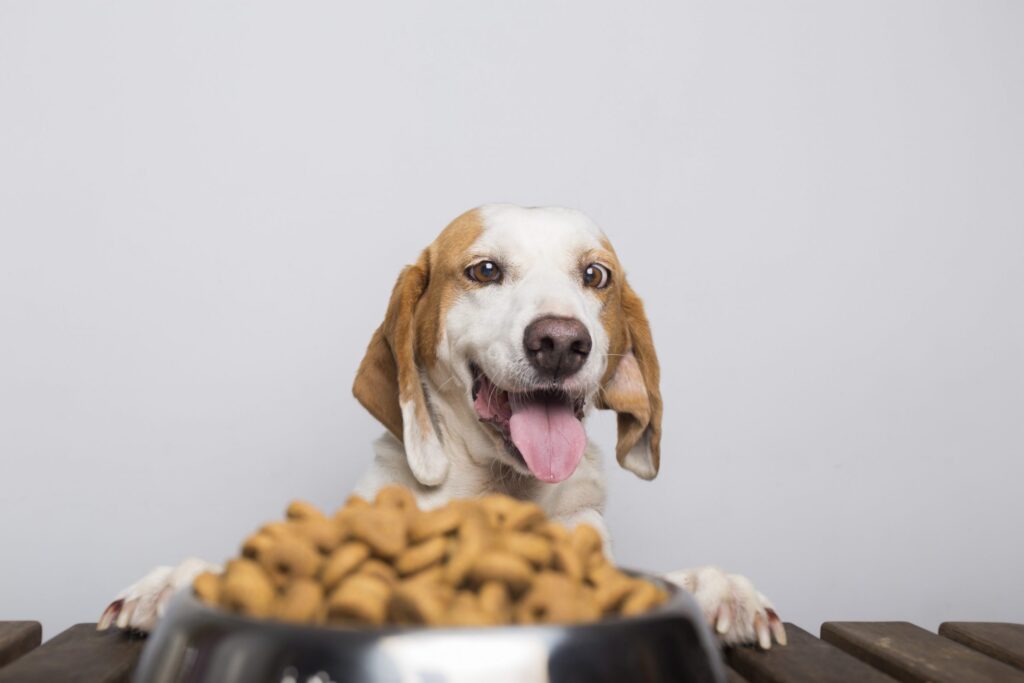As pet parents, we always want the best for our furry companions. One of the most important aspects of their well-being is their diet. Choosing the right dog food can sometimes feel overwhelming with so many options available—grain-free, raw, organic, dry kibble, wet food, and specialty diets for sensitivities. But how do you know if the food you’re giving your dog is truly benefiting them?
Just like humans, dogs can experience digestive problems, allergies, or nutrient imbalances if their diet doesn’t suit them. Paying attention to their physical and behavioral signs can help you identify whether their dog food is right—or if it’s time to reconsider what you’re feeding them.
Below are the key signs that your dog’s current diet may not be the best match, along with tips on what to do next.
1. Digestive Issues Are Frequent
Upset Stomach
One of the clearest indicators that your dog’s food isn’t working for them is frequent digestive distress. This could show up as vomiting shortly after meals or repeated gagging. Occasional upset stomachs are normal, but if it happens often, it may point to poor food quality or ingredients that don’t sit well with your dog.
Gas and Bloating
Dogs naturally pass gas sometimes, but constant or foul-smelling gas can indicate their dog food is hard to digest. Bloating or abdominal discomfort also suggests that something in their diet isn’t agreeing with them.
Diarrhea or Constipation
Loose stools or chronic diarrhea should not be overlooked. On the flip side, frequent constipation could mean the diet lacks fiber or hydration. Balanced nutrition should produce firm, regular stools.
2. Skin and Coat Problems
Excessive Shedding
While shedding is normal for most breeds, excessive or unusual shedding may signal poor nutrition. Low-quality dog food often lacks essential fatty acids, which help maintain a healthy coat.
Itching and Scratching
Constant scratching, licking, or chewing at the skin can indicate food allergies or sensitivities. Some ingredients like beef, chicken, dairy, or grains are common triggers for canine food allergies.
Dull or Dry Coat
A shiny, soft coat usually reflects good nutrition. If your dog’s coat looks dull, dry, or brittle, their current diet might not provide enough healthy fats, vitamins, and minerals. Regular dog grooming helps maintain coat health, but if the problem is nutritional, grooming alone won’t fix it.
3. Unexplained Weight Changes
Sudden Weight Gain
If your dog gains weight even when they’re eating normal portions and getting regular exercise, it may be due to calorie-dense or carbohydrate-heavy dog food. Some foods also contain fillers that add calories without nutrients.
Weight Loss or Inability to Gain Weight
If your dog is eating plenty but still losing weight or struggling to maintain their size, their food may lack sufficient nutrients or protein. This is especially concerning for puppies or active dogs who require higher caloric intake.
4. Lack of Energy and Lethargy
Dogs should be energetic and playful according to their age and breed. If your dog seems unusually tired, sleeps too much, or avoids exercise, poor nutrition could be a factor. Some dog food brands may not provide the right balance of protein, fats, and carbs, leading to low energy levels.
5. Bad Breath and Oral Health Issues
Persistent Bad Breath
While all dogs have a bit of “doggy breath,” strong or foul-smelling breath may indicate poor diet quality or digestive imbalances.
Dental Problems
Food with high sugar or starch content can contribute to tartar buildup and gum disease. Choosing high-quality dog food formulated to support dental health can make a big difference. Pairing it with regular dog grooming habits, such as brushing their teeth, helps keep oral problems at bay.
6. Behavioral Changes
A poor diet can affect more than just your dog’s physical health—it can influence their mood and behavior.
- Irritability: Lack of proper nutrients may make your dog restless, cranky, or more aggressive.
- Anxiety: Certain food additives and preservatives can impact your dog’s nervous system, leading to increased stress or hyperactivity.
- Lack of Focus: If your dog struggles with training or seems less responsive, their diet could be partly responsible.
7. Ear Infections and Allergies
Dogs with food sensitivities often develop recurring ear infections. Signs include redness, constant head shaking, pawing at the ears, or foul odor. If your dog’s ears are frequently inflamed despite dog grooming and cleaning, their dog food might contain an allergen.
8. Excessive Thirst or Urination
If your dog is suddenly drinking more water than usual or urinating more frequently, it could be a sign of high sodium content in their dog food. This can put stress on their kidneys and bladder. In some cases, excessive thirst may point to underlying health conditions, so always consult your vet if you notice this sign.
9. Poor Growth in Puppies
For puppies, balanced nutrition is critical to ensure healthy development. If your puppy seems smaller than average for their age, has weak bones, or isn’t meeting milestones, their dog food might not provide the required protein, vitamins, and minerals for growth.
10. Allergic Reactions
Red or Inflamed Skin
Food allergies can cause redness, hot spots, or rashes. These are often visible around the paws, belly, or ears.
Paw Chewing
Dogs frequently chew their paws when they’re experiencing allergic reactions to ingredients in their food.
Respiratory Issues
Sneezing, coughing, or nasal discharge can also be linked to food sensitivities.
11. Frequent Stool Changes
A healthy dog should have consistent, firm, brown stools. If your dog’s stool changes often—sometimes firm, sometimes loose—it may be due to inconsistent or low-quality dog food. Switching between different food types too quickly can also cause stool problems.
12. Dandruff and Flaky Skin
Just like humans, dogs can suffer from dandruff if their diet lacks essential nutrients like omega-3 and omega-6 fatty acids. Even with regular dog grooming, poor-quality food can leave their skin dry and flaky.
13. Food Refusal or Picky Eating
If your dog frequently refuses to eat their dog food, it might not be palatable or satisfying. While some dogs are naturally picky, ongoing food refusal often means they don’t find their diet enjoyable or digestible.
14. Immune System Problems
A weak immune system often shows up as frequent illnesses, such as infections, colds, or slow wound healing. Poor-quality dog food lacking in vitamins and minerals can compromise immunity over time.
What to Do If You Notice These Signs
If you recognize several of the signs above, don’t panic—there are steps you can take to help your furry friend.
1. Consult Your Veterinarian
Your vet can help identify whether your dog’s symptoms are diet-related or linked to a medical condition. They may recommend allergy testing or a food trial to narrow down problem ingredients.
2. Switch to High-Quality Dog Food
Look for dog food with whole protein sources like chicken, fish, or lamb, and avoid fillers such as corn, soy, or by-products. Opt for brands that prioritize natural ingredients and essential nutrients.
3. Transition Slowly
When changing diets, always do it gradually—mixing the new food with the old over 7–10 days. Sudden changes can worsen digestive issues.
4. Pay Attention to Portion Control
Overfeeding can cause obesity and digestive problems, while underfeeding can lead to malnutrition. Follow feeding guidelines but adjust based on your dog’s size, age, and activity level.
5. Support with Grooming and Care
Regular dog grooming complements good nutrition. Brushing helps distribute natural oils, while baths keep skin clean and healthy. Combined with a balanced diet, grooming ensures your dog’s coat and skin stay in top condition.
Common Ingredients That May Cause Issues
Some ingredients in dog food are more likely to trigger allergies or sensitivities. Watch out for:
- Wheat and corn
- Soy products
- Dairy
- Artificial preservatives (BHA, BHT, ethoxyquin)
- Artificial colors and flavors
- Certain proteins like beef or chicken (common allergens for some dogs)
How to Choose the Right Dog Food
With so many options available, here are a few tips to make the right choice:
- Check labels carefully: Look for real meat as the first ingredient.
- Match food to life stage: Puppies, adults, and seniors need different nutrient balances.
- Consider breed and size: Large breeds often need joint-supporting nutrients, while small breeds require calorie-dense options.
- Choose specialty formulas if needed: For dogs with allergies, sensitivities, or medical conditions.
Final Thoughts
Your dog’s health and happiness are closely tied to the food they eat. If you notice digestive problems, skin issues, weight changes, or behavioral shifts, their dog food may not be the right fit. While dog grooming plays an important role in keeping them clean and comfortable, true wellness starts with proper nutrition.
By paying attention to these signs and working with your vet, you can ensure your furry friend gets the nourishment they need for a long, healthy, and joyful life.



